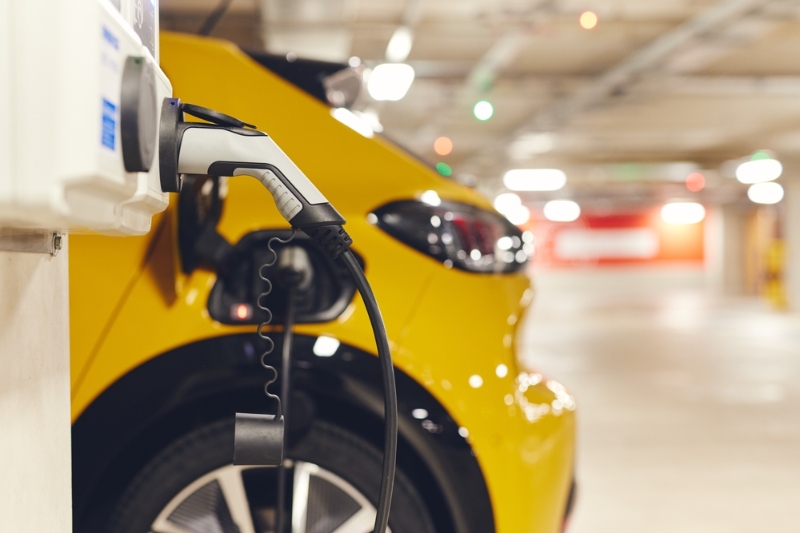Andy Peart, marketing director at Yotta, looks at EV infrastructure and the role of asset management.


The UK government is set to ban the sale of new petrol and diesel cars from 2030 as part of its drive to cut emissions to net zero by 2050. In fact ministers have recently announced plans to introduce sales mandates to hit interim targets before the petrol phase out at the end of the decade.
That’s helping to give rise to a burgeoning market for electric vehicles. Recent Motorparc data released by the Society of Motor Manufacturers and Traders (SMMT) revealed that nearly three quarters of a million vehicles on the road today can be plugged in, including 720,053 cars, 26,990 vans, 993 buses and 313 trucks.[1]
The rapidly-increasing volume of electric vehicles on our roads is driving an urgent need for appropriate infrastructure to be established. This is set to be a colossal task.
In fact, a report released by SMMT and Public First revealed that at least 2.3 million public charging points will be needed to installed by 2030, highlighting how important it is for businesses involved in the organisation and maintenance of the charging points to ensure that their infrastructure mirrors rapidly-growing demand while at the same time building on consumer trust.
A growing challenge
A recent survey by Yotta (now part of Causeway Technologies) of UK professionals involved in the, maintenance, installation, management supply of EV charging points revealed that58% feel that their network will grow by 41% or more within the next decade. There is certainly a need to increase capacity, while organisations need to be mindful of the proportion of charging points that will be needed at locations like charging hubs, fuel stations, and privately-owned car parks and understand the parallel usage in order to make the most effective network decisions.
As capacity is set to expand moving forward, network reliability will be key, along with the necessity to meet government initiatives and policies as they emerge. Just 47% of respondents said that faults or issues with charging points are automatically being identified via remote device management software, with field inspectors generally being sent out to site to report back. Close to a third (31%) said that they manually schedule engineers through paper-based forms or reports, while less than half (49%) of devices and sites are monitored in real-time with the help of technology.
Investment in robust and resilient asset management processes will therefore quickly become a key component to ease the strain and avoid prolonged downtime.
Building an EV infrastructure to last
Having access to the assistance of a trusted technology partner will help EV charge point network engineers and providers to steer the country towards an electric future on the roads.
The approach could also support the development of asset lifecycle management, including having visibility into which assets are in place, their current condition and location, budgeting of assets, connecting technology and teams, and leveraging data to make more informed decisions. Additionally, technology can support both reactive and proactive maintenance, streamlining workflows, processes and system updates.
Helping drive productivity and streamline operational efficiencies, EV charge point network providers can also make use of mobile applications to rapidly assign tasks to network engineers while allowing updates to be received in the field. Automated workflows can also be generated and configured and sent to operational staff out in the field, saving both time and resources. Urgent appointments can be scheduled quickly, and data can be sent rapidly so any changes required can happen swiftly. This all helps support a centralised management approach that removes the use of spreadsheets for data analytics; the manual scheduling of engineer tasks and the use of outdated paper-based forms.
Scoping out plans
Effective harnessing of asset management will help EV charge point network providers deliver automation and drive network efficiency while supporting sustainability and growth, helping to improve both data visualisation and quality. It will also be crucial to effectively future proof the network over the next few years as market regulations and needs continue to evolve, while flexibility will be needed to bring new charging points to certain locations quickly and effectively in line with ongoing growth in user demand.
The electric vehicle revolution is already underway, and the UK Government’s pending ban of diesel and petrol cars will serve to supercharge it over the coming years. The number of EV charging points in place is set to grow rapidly in line with all this. Putting in place appropriate technology will be key both in scaling up network provision but also in supporting enhanced management and upkeep of the entire network. We are on the cusp of an exciting new age and the right technology will be crucial in making it happen.
Andy Peart is marketing director at Yotta.